Looking Back At The 1918 Flu Pandemic, In Photos
Take a glimpse at archival photos of scenes and people living during one of the deadliest pandemics in human history.
This story is part of Science Friday’s coverage on the novel coronavirus, the agent of the disease COVID-19. Listen to experts discuss the spread, outbreak response, and treatment.
The 1918 influenza pandemic is one of the worst global pandemics in human history. Tens of millions of lives were lost to the deadly strain of H1N1 virus. The event changed the state of public health—and some are looking back to help understand the COVID-19 pandemic.
“I don’t think [COVID-19] is a one off, I think it will be a feature of our daily life,” Catharine Arnold, a historian and author of Pandemic 1918: Eyewitness Accounts from the Greatest Medical Holocaust in Modern History, says in a recent Science Friday interview. “But I don’t think we will suffer the same mortality rate as they did in 1918. We are a bit more prepared now, we have more resources.”
In addition to shifting medical practices, the 1918 flu altered everyday life—with parallels to what many cities throughout the United States are experiencing today. The scenes captured on film show mail clerks, street car conductors, police squads, and first-responders decked out in face masks and protective gear. Take a look at scenes and people living during the 1918 influenza pandemic, from the U.S. National Archives.
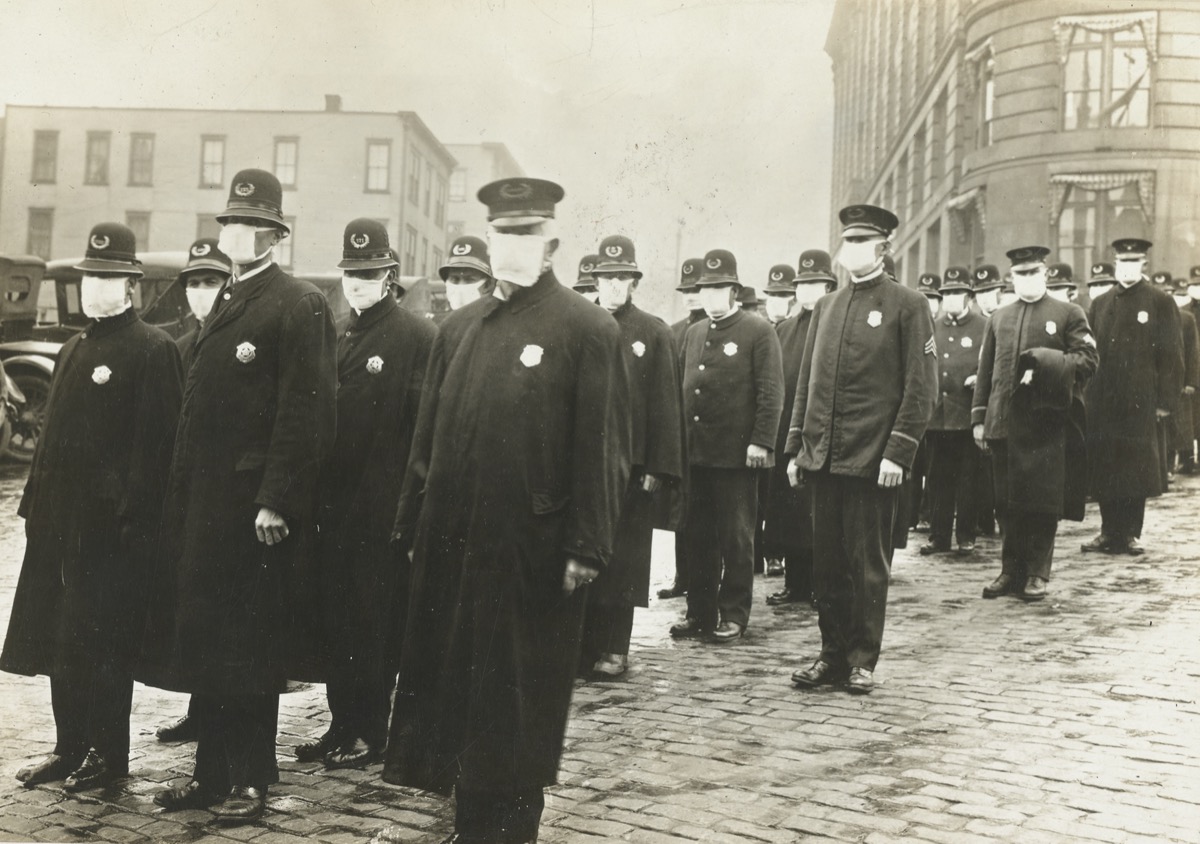
Police officers in Seattle, Washington wear masks made by the Seattle Chapter of the Red Cross during the influenza pandemic. Credit: U.S. National Archives
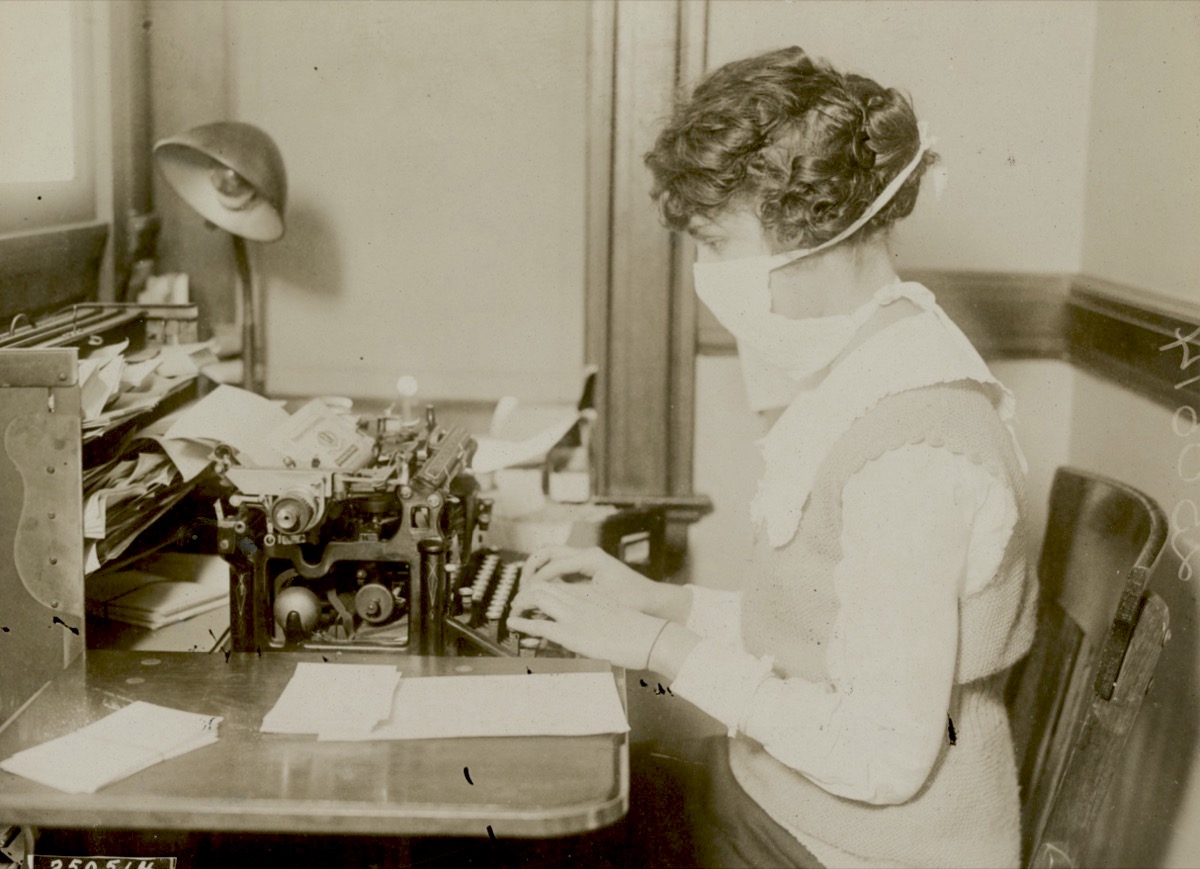
A typist in New York City wears a face mask to protect against the flu. In New York City, practically every worker had their face muffled by gauze masks as protection against disease. Credit: U.S. National Archives
 The 1918 flu has commonly been called the “Spanish Flu.” But it wasn’t Spanish at all. Listen to the origin of the name in an episode of the new Science Diction podcast!
The 1918 flu has commonly been called the “Spanish Flu.” But it wasn’t Spanish at all. Listen to the origin of the name in an episode of the new Science Diction podcast!
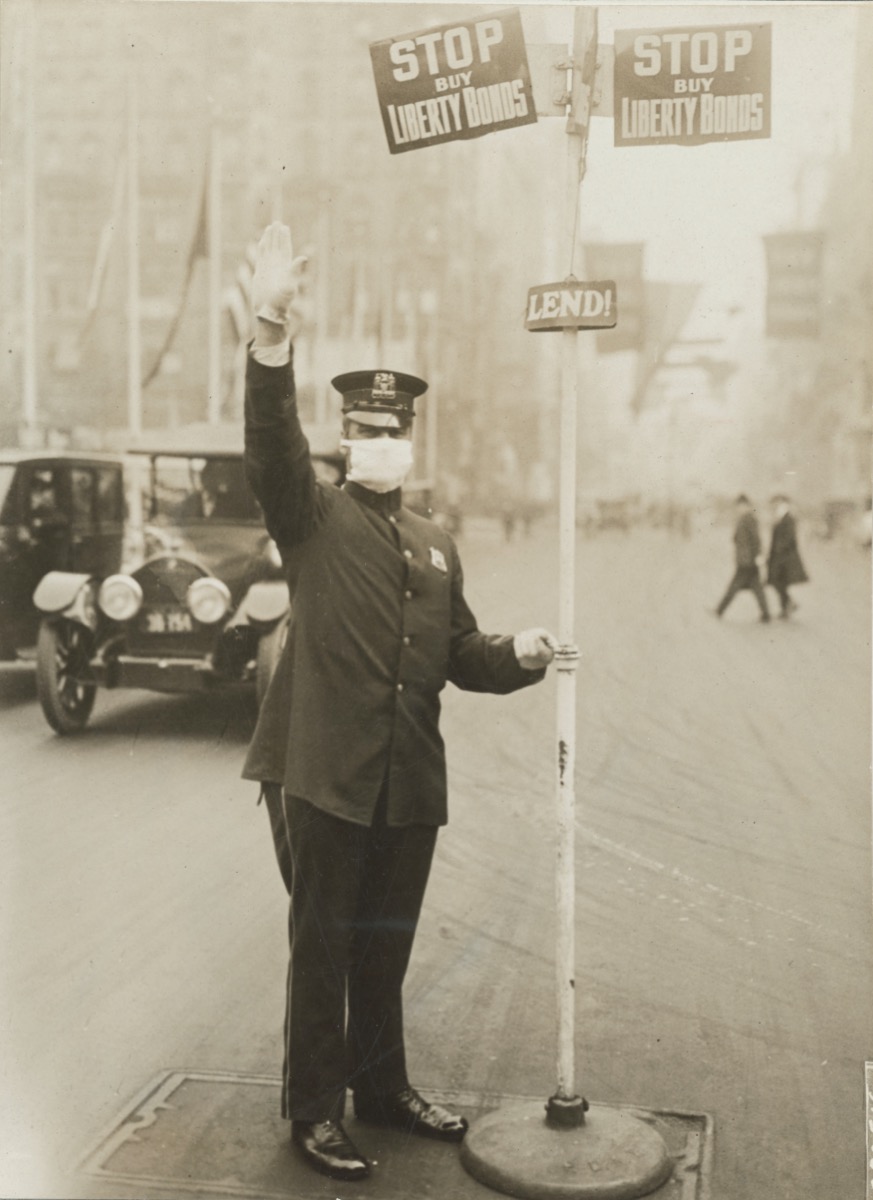
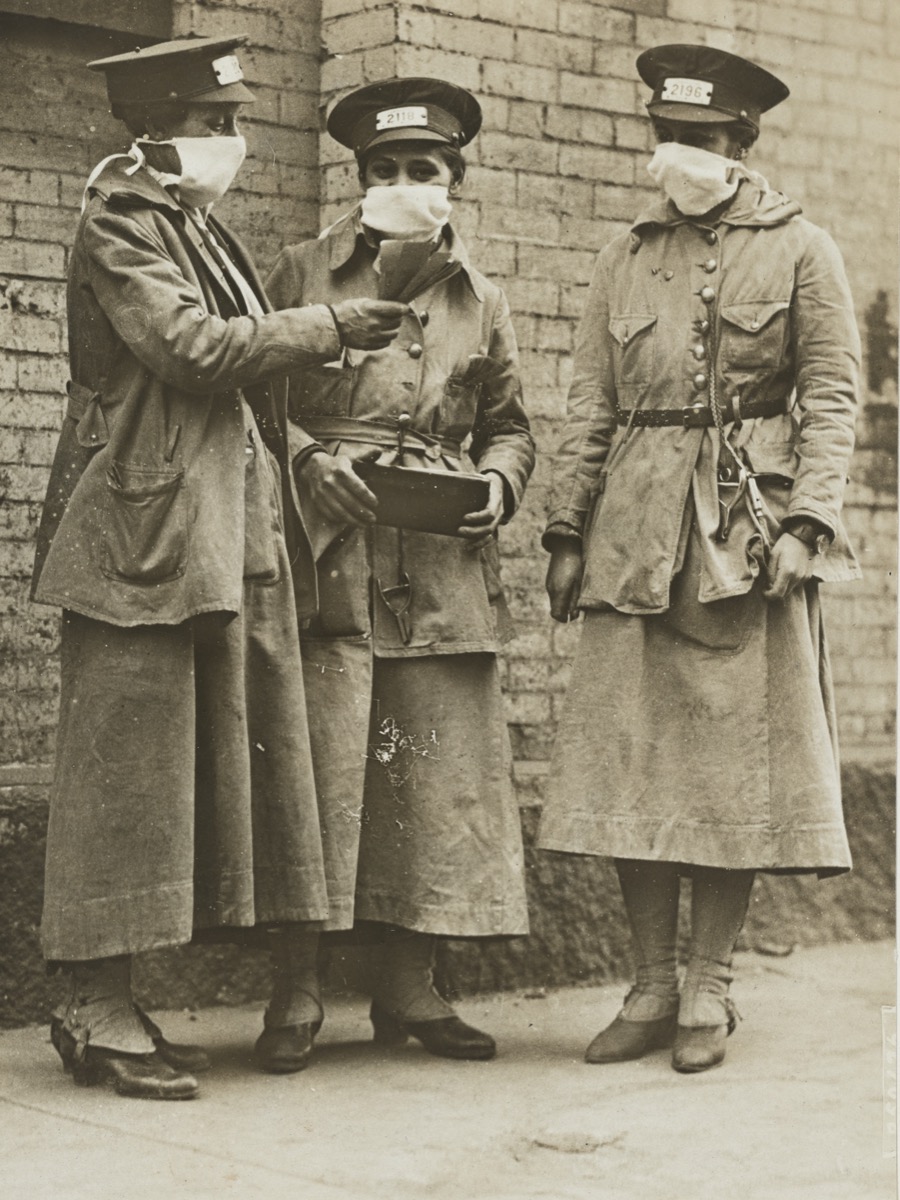
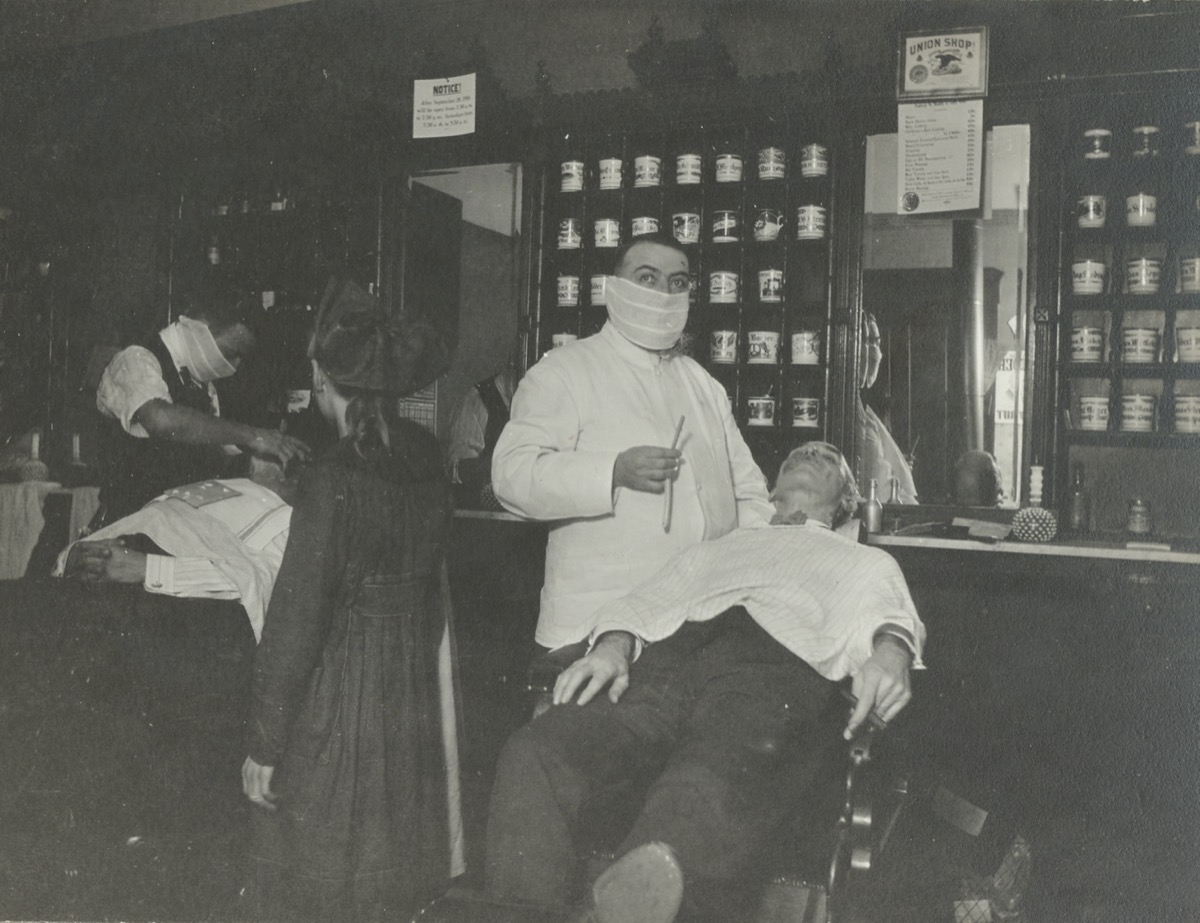
Cincinnati barbers wear masks. Credit: U.S. National Archives
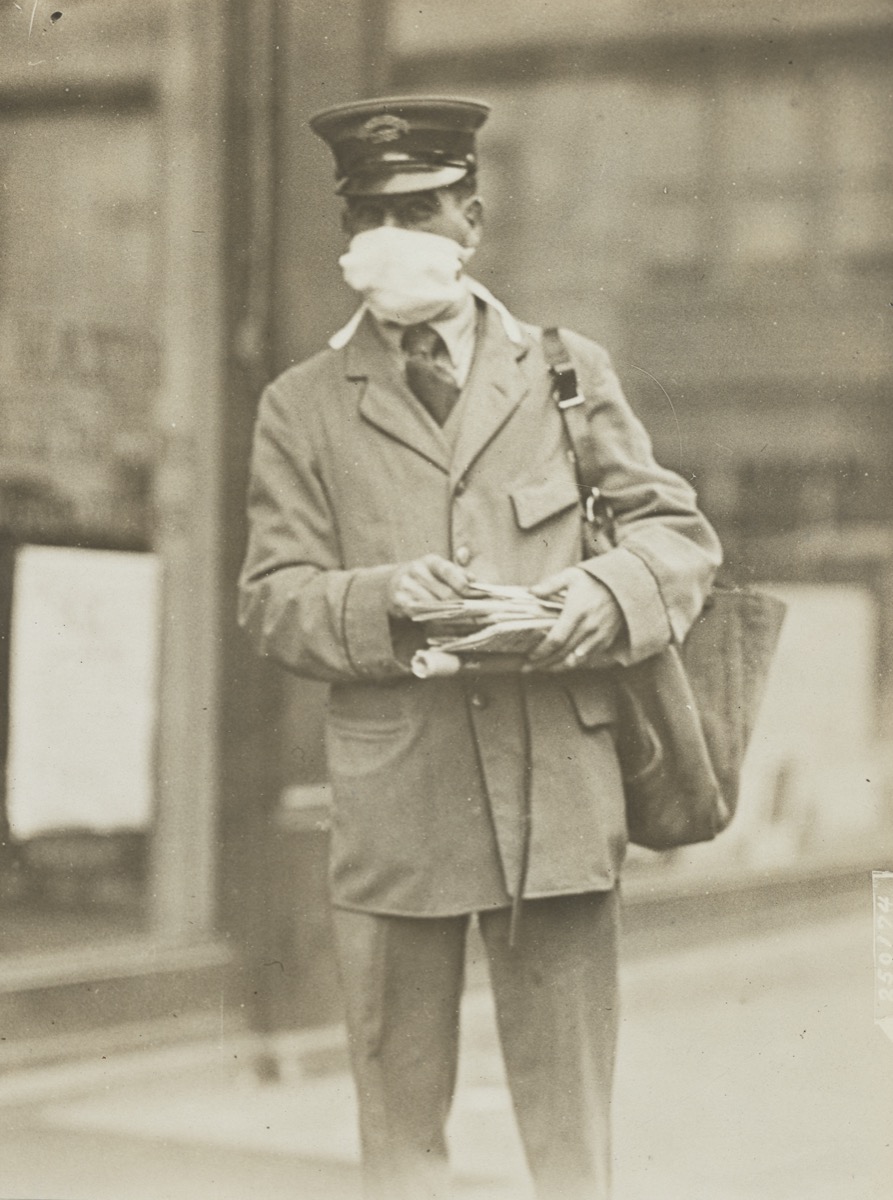
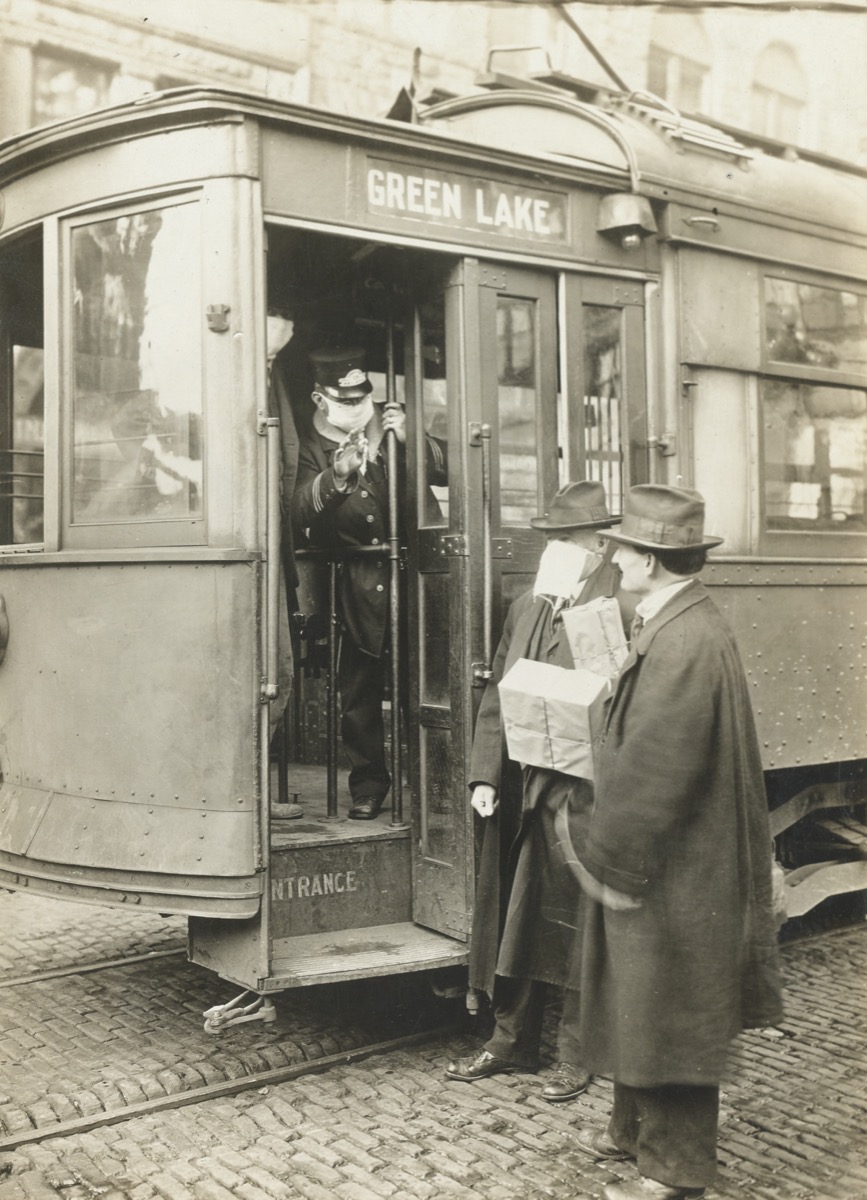
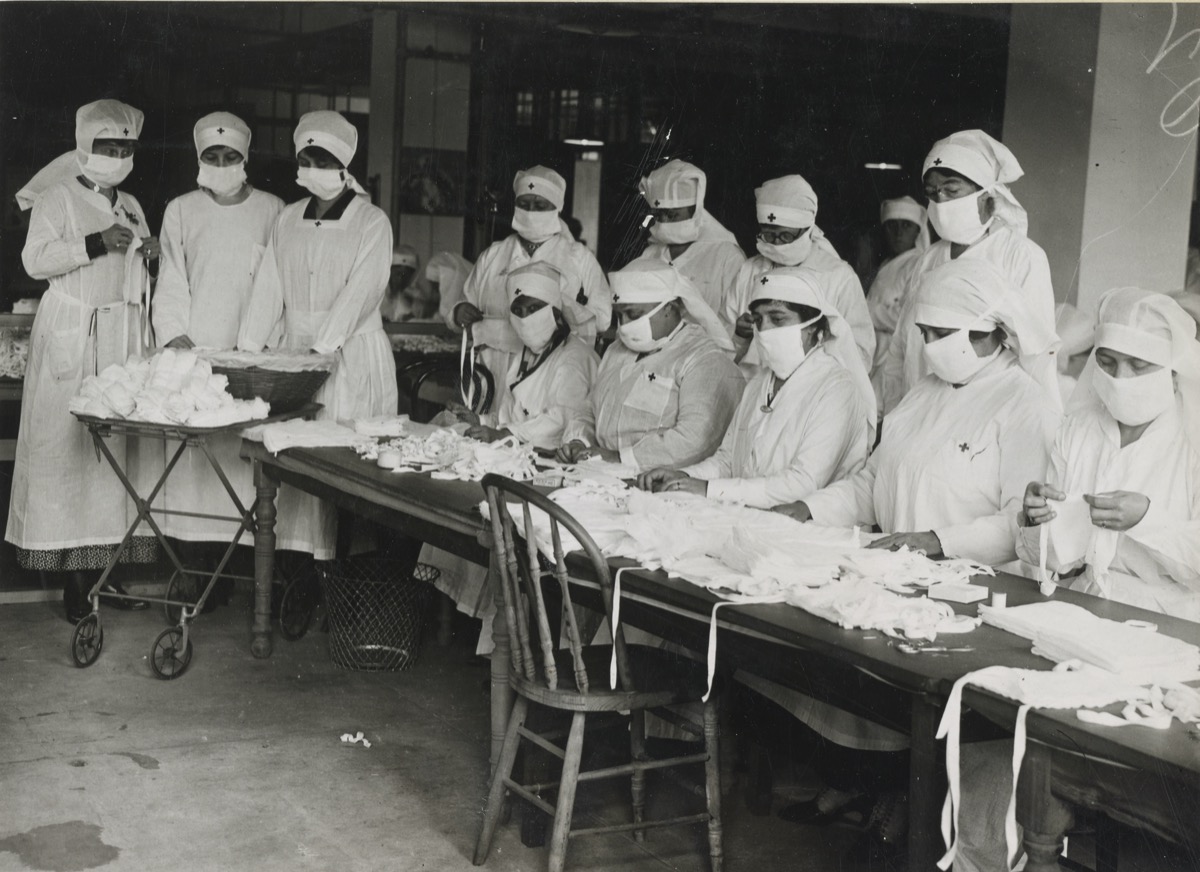
Red Cross workers in Boston, Massachusetts make face masks for soldiers in camp. The Red Cross made over 260,000 masks during the flu pandemic. Credit: U.S. National Archives
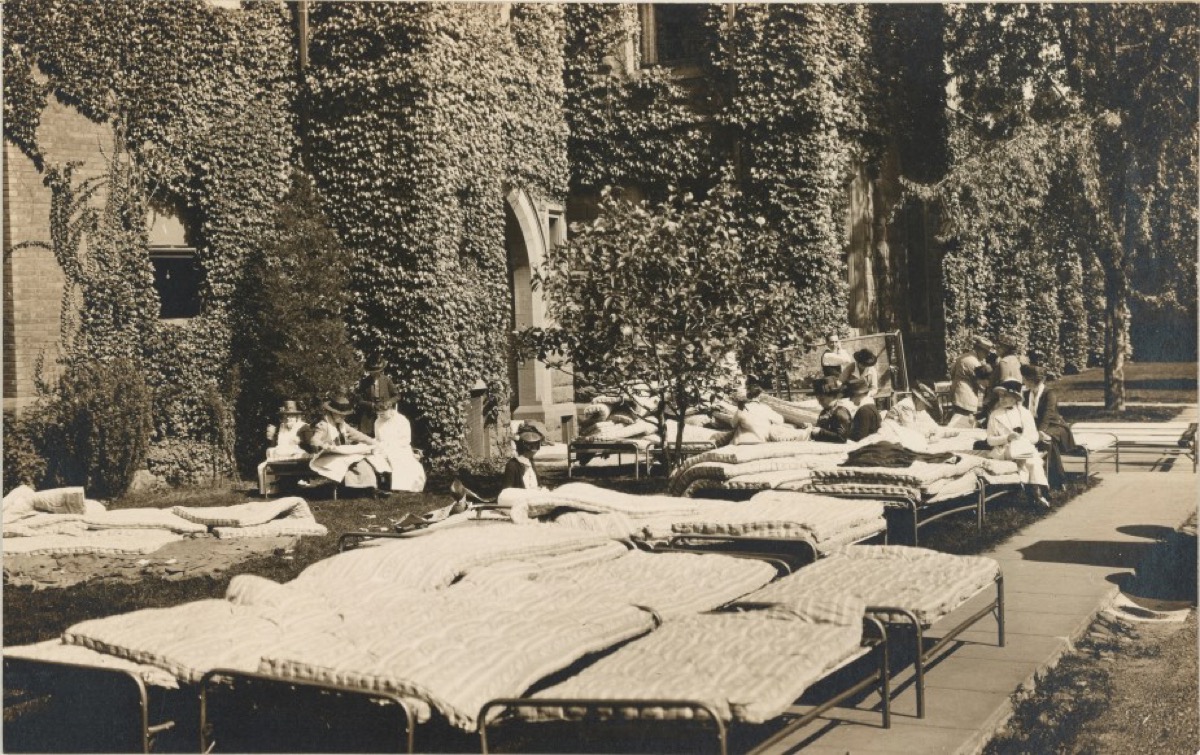
In Middletown, Connecticut, emergency hospital equipment is inspected by the committee of the Middlesex Chapter of the American Red Cross. This equipment was sent to Wesleyan University during the outbreak of the influenza pandemic. Credit: U.S. National Archives
“It was the poor and the sick who suffered most.”
— Catharine Arnold
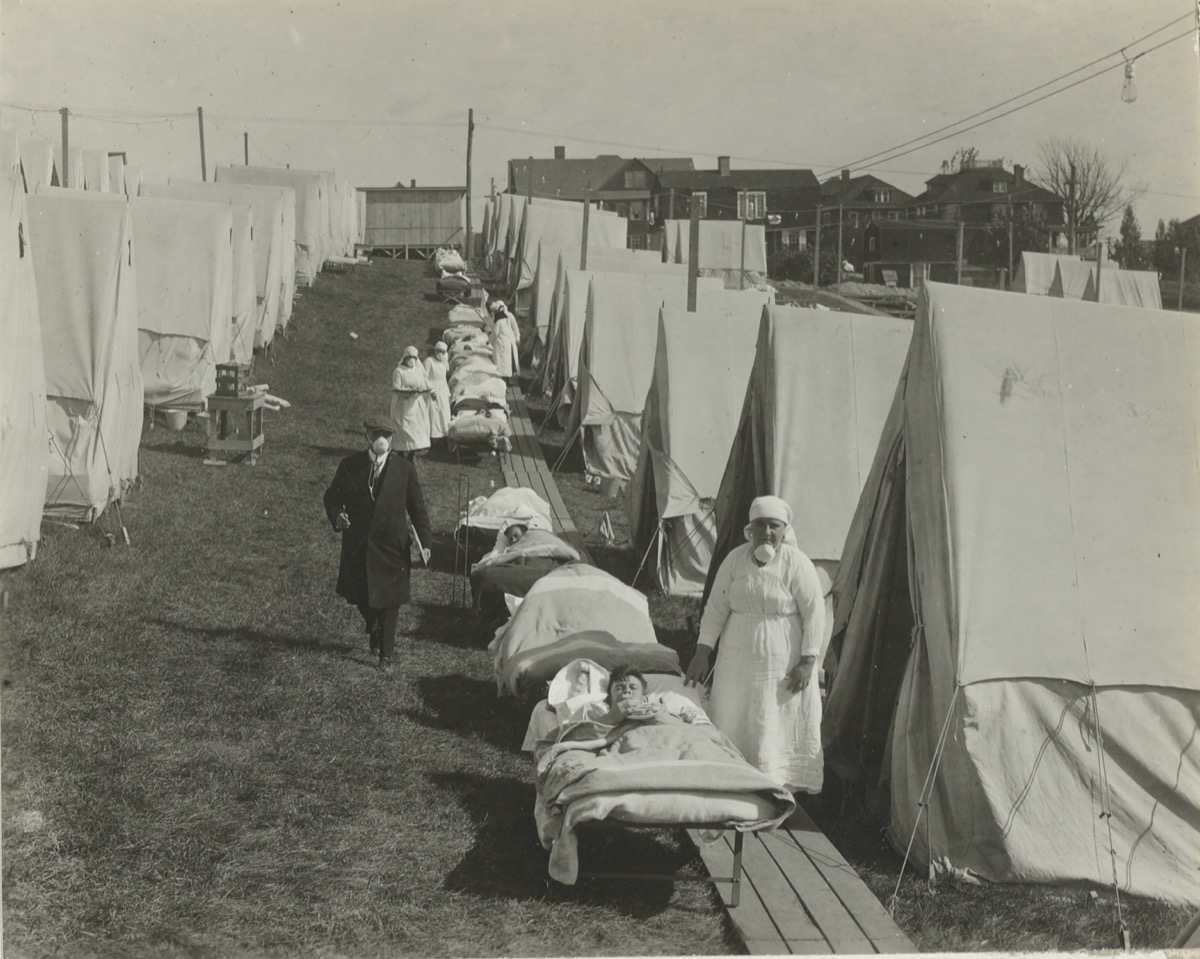
An emergency hospital in Brookline, Massachusetts. Credit: U.S. National Archives
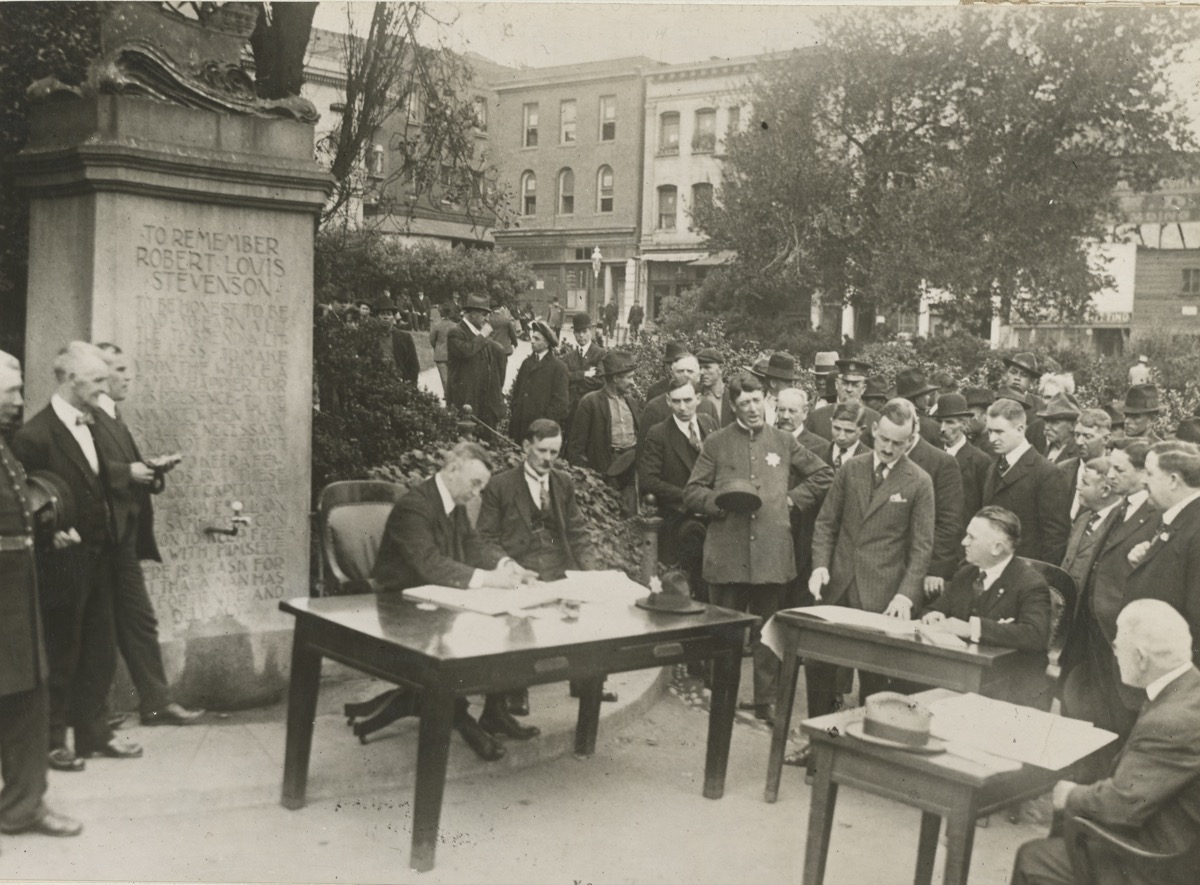
Police Court Officials of San Francisco hold a session in the open air, as a precaution against the spreading influenza. Credit: U.S. National Archives
“The most successful measures in containing it were almost identical to the ones being used today—and that is quarantine.”
— Catharine Arnold
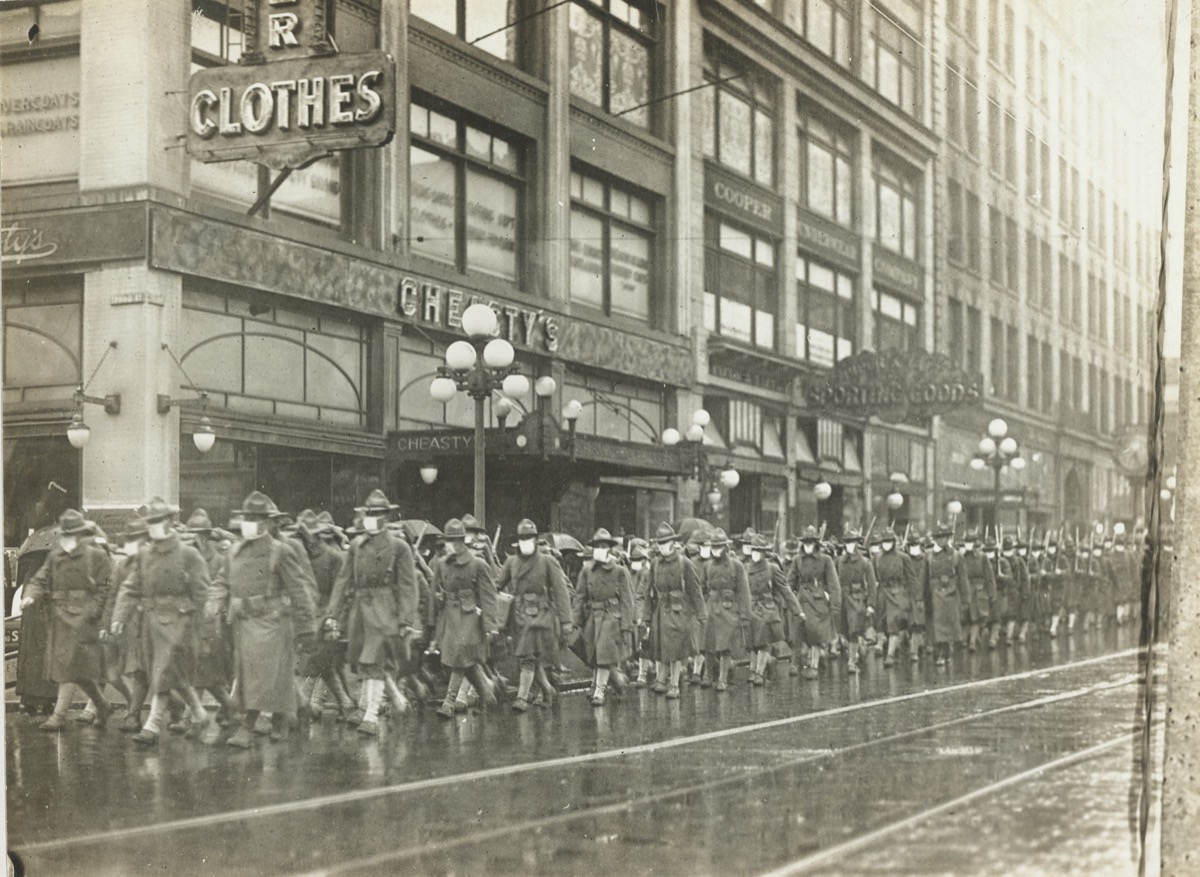
The 39th Regiment on its way to France marched through the streets of Seattle, Washington, each member provided with a mask made by the Seattle Chapter of the Red Cross. Credit: U.S. National Archives
Invest in quality science journalism by making a donation to Science Friday.
Lauren J. Young was Science Friday’s digital producer. When she’s not shelving books as a library assistant, she’s adding to her impressive Pez dispenser collection.